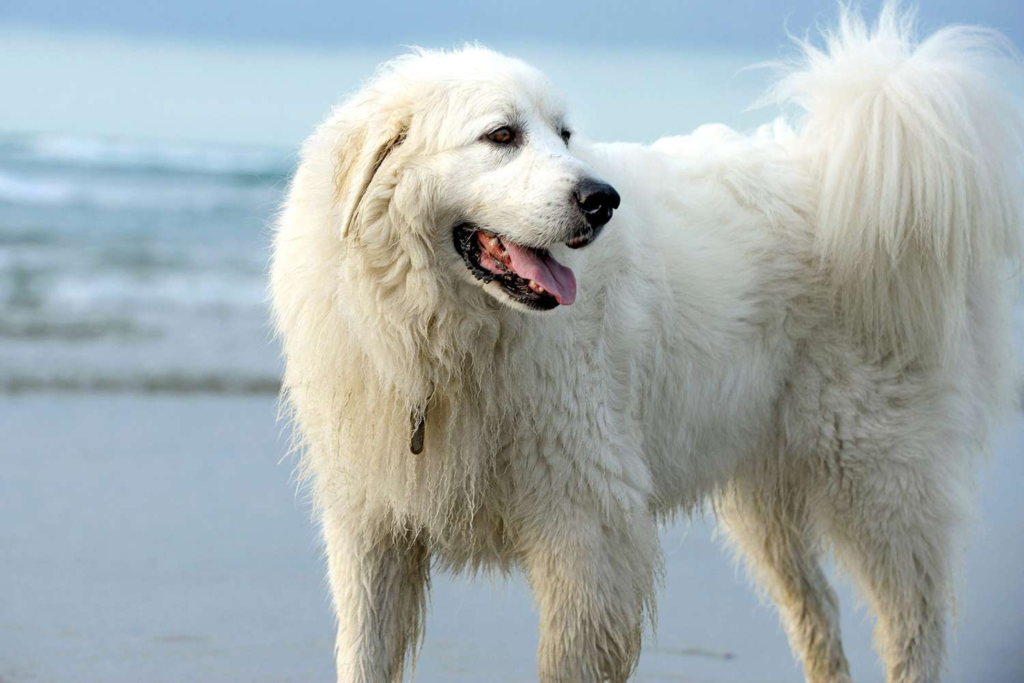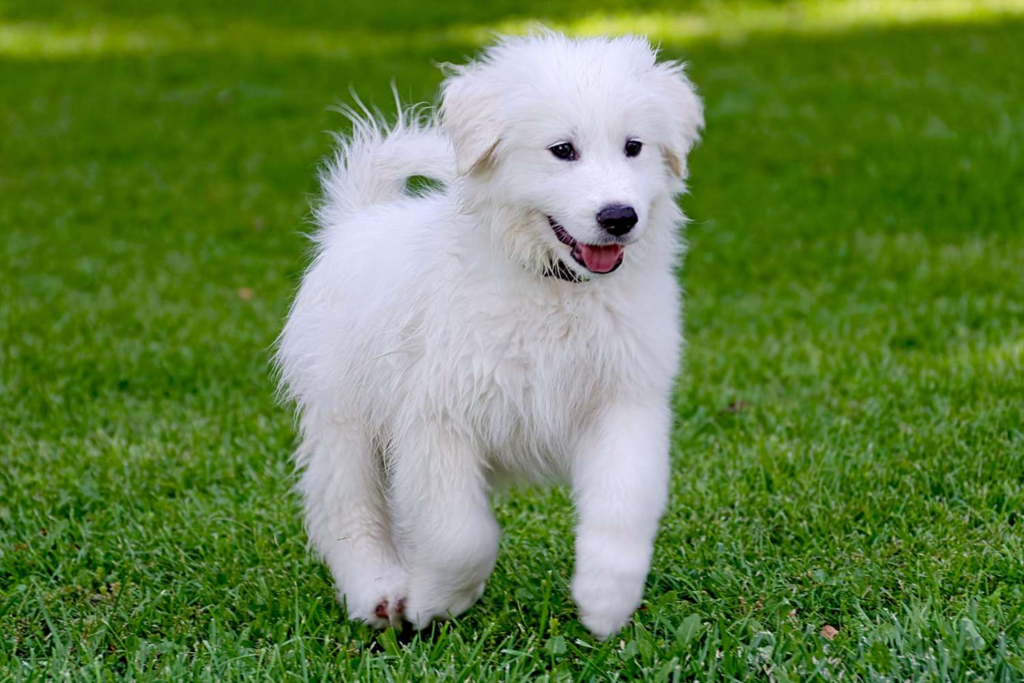Great Pyrenees

Great Pyrenees:- ‘Patou’ is a nickname for the Great Pyrenees Mountain Dog, also known as the Pyrenean Mountain Dog or Chien de Montagne des Pyrénées. These dogs are typically large, white, and originally bred in France to protect sheep from wolves and other predators.
While they can make loving family pets, Patous trained as guard dogs can be strong-willed and may display aggression if they sense a threat to their flock or territory. Their training as livestock guardians differs from that of a family pet, focusing on defense and attack in the face of danger.
Visitors to the mountains should avoid approaching any flocks of sheep or goats and keep a safe distance from Patous. Keep your dog on a short leash and give the flock a wide berth. Children should not approach or run near the flock.

If a Patou comes close, remain calm and avoid sudden movements or shouting. You might even try yawning, as this can signal calmness to the dog. Avoid direct eye contact or threatening gestures, such as waving a stick, as these could be interpreted as aggression.
Gradually distance yourself from the herd or flock without making sudden movements, and steer clear of any confrontational behavior.
How is a sheepdog trained?
An independent and strong-willed dog like the Patou requires early and specialized training to become an effective sheepdog. Unlike a family pet, a Great Pyrenees destined for herding is raised alongside sheep and goats from a young age, fostering a strong bond with the animals. This close relationship helps the Patou see the herd as its own family, motivating it to protect them diligently.
Now, let’s explore how to interact appropriately if you encounter a Patou in the mountains.
1. Avoid the Flock
If you encounter a flock of sheep or goats during your outing, try to navigate around them if possible. At a safe distance, the dog should generally remain at a distance and not approach you. While it might bark to signal you to stay away, it should not advance towards you.
2. Stay Calm
If barking doesn’t deter the dog and it starts to act defensively, be extra cautious. The dog might position itself between you and the flock, and could potentially become aggressive if you don’t retreat.
If the dog does come closer, your best response is to remain still and let it approach you. Avoid running or making sudden movements, and stay calm. Face the dog and allow it to approach and sniff you. Refrain from shouting or any actions that might be perceived as threatening.
3. Avoid Behavior That the Great Pyrenees Might Interpret as Confrontational
Don’t give the Patou any reason to see you as a threat. Refrain from making direct eye contact or using objects like sticks, as these could be perceived as aggressive or dominant behavior.
4. Don’t Touch the Animals
It may be tempting to approach and pet the lambs, but doing so could put you at risk. The Patou is there to safeguard the flock, and getting too close might be seen as a threat to the animals it’s protecting.
This is especially important if you have children with you. Ensure they understand that Patous are not pets and should not be petted, nor should they touch the animals.
By avoiding these behaviors, you signal to the Patou that you are not a threat, allowing you to gradually move away from the herd.

How to React When Confronted by a “Patou”
What to Do:
– Stop Immediately: Stand still and avoid any sudden movements.
– Keep Calm: Keep your arms down by your sides and speak in a calm, soothing voice to the dog(s).
– Stay Calm: Maintain a calm demeanor, even if it’s just on the surface.
– Move Slowly: If needed, move away from the dog and the flock slowly. If the dog starts barking again, stop and remain still until it calms down.
– Navigate Carefully: If the flock is obstructing your path, go around them if the terrain permits instead of forcing your way through the middle.
What Not to Do:
– Don’t Run: Running may trigger the Patou to chase you, and it’s likely faster than you.
– Don’t Use Trekking Poles Aggressively: Waving them around can be interpreted as a threat.
– Don’t Throw Objects: Avoid throwing stones or any other objects at the dog(s).
– Don’t Use Pepper Spray: Refrain from using pepper spray or similar deterrents.
– Avoid Direct Eye Contact: Direct eye contact can be seen as a challenge.

The Patou may take a few minutes to assess whether you’re a threat. It will gradually calm down and may eventually return to the flock.
If you come across a Patou, there’s no need to panic—attacks are extremely rare, and most hikers won’t even encounter one.
If you do spot a Patou, follow these guidelines from the Enchastrayes town information page for Alpes-de-Haute-Provence:
1. Keep Your Distance: Stop and maintain a safe distance from the herd. Avoid approaching them.
2. Stay on Your Path: Stick to your hiking or cycling route, but if the herd crosses your path, don’t walk through them. Instead, find a way to go around them.
3. Leash Your Dog: If you’re hiking with a dog, keep it on a leash at all times.
4. Avoid Interaction: Do not attempt to pet, feed, or take photos of the Patou. They are not pets and should be treated with respect.
5. Respond to Aggression: If a Great Pyrenees approaches you, it may bark or charge as it assesses whether you are a threat. Remember, their primary role is to protect livestock from predators, not to engage with people.
Also Read:-




